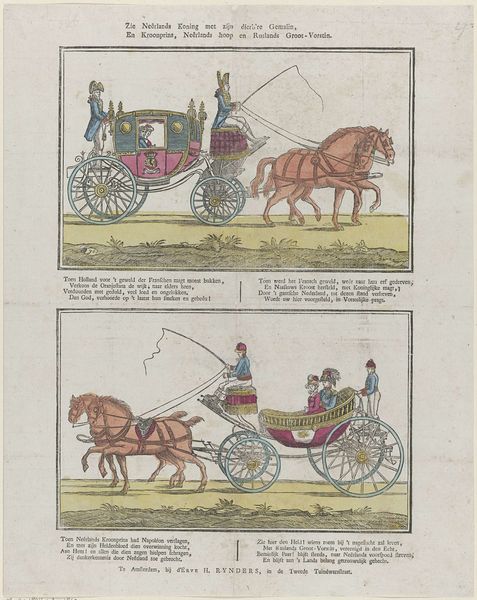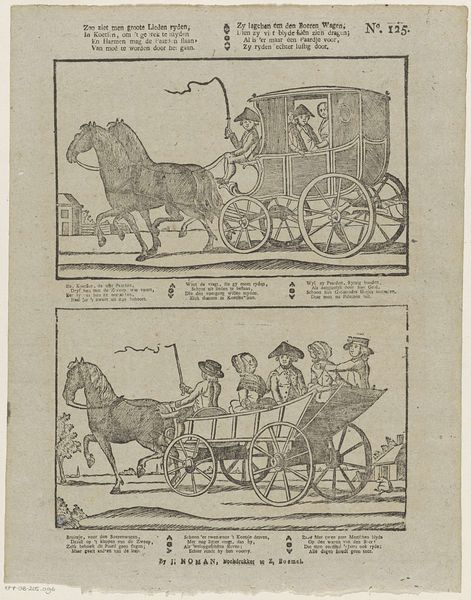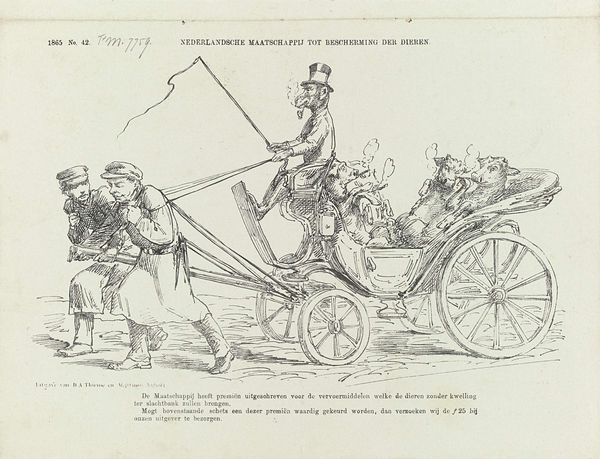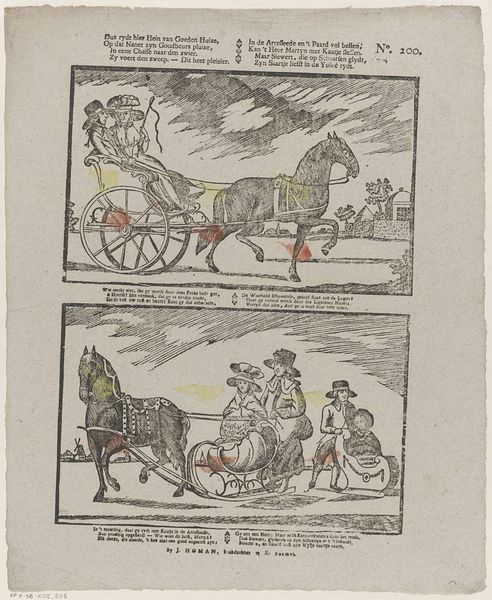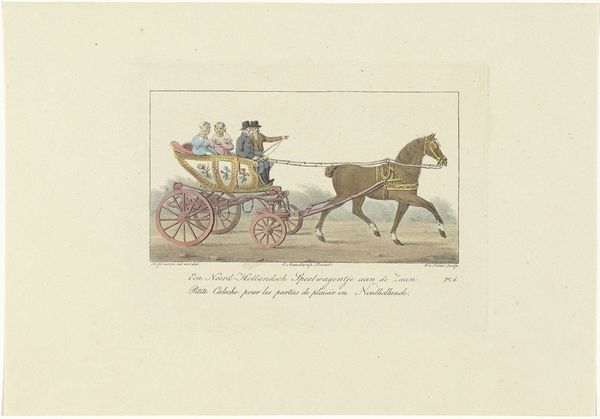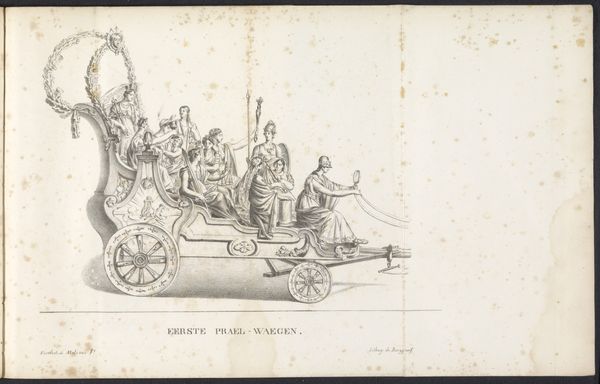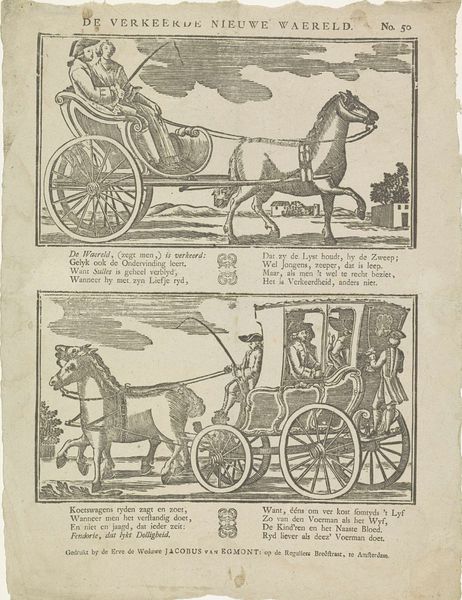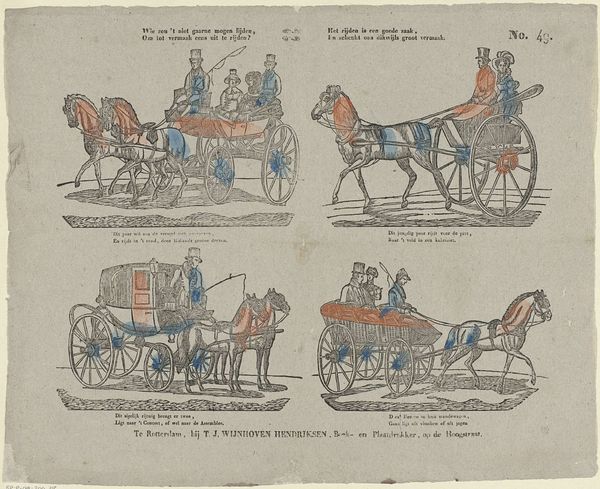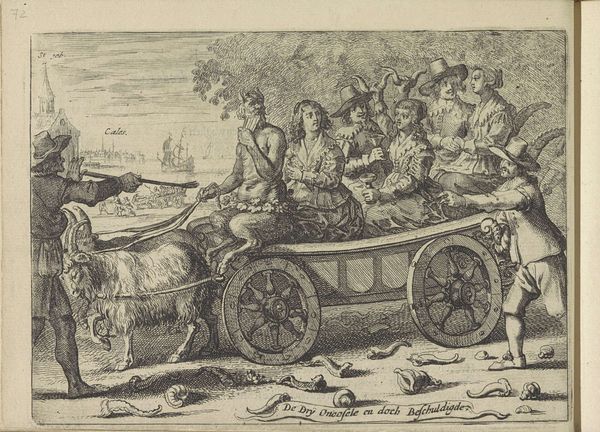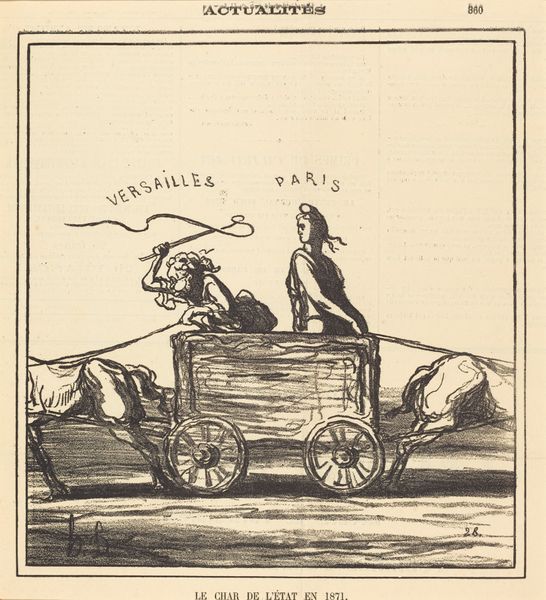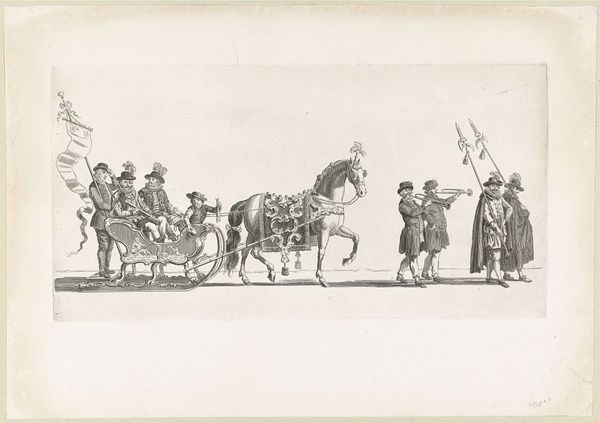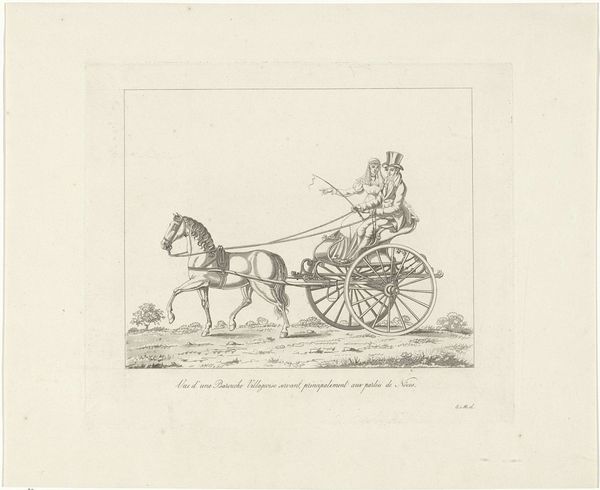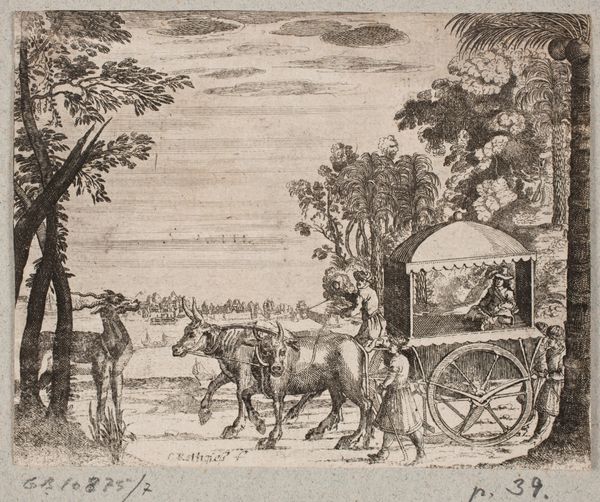
August, keurvorst van Sachsen, met Wolf von Schonbergk, Baltzer Wurm en Paul Gröbel verkleed als boeren, voorafgegaan door een gezelschap in een ossenwagen 1553 - 1586
0:00
0:00
Dimensions: height 240 mm, width 600 mm, height 171 mm, width 588 mm
Copyright: Rijks Museum: Open Domain
This anonymous print depicts August, Elector of Saxony, and companions disguised as peasants. The most striking symbol here is the act of dressing in disguise. This motif, deeply rooted in carnival traditions, embodies a temporary subversion of social order. Consider how this same theme appears in commedia dell'arte, where characters adopt disguises to challenge authority and explore hidden desires. It is a recurring theme throughout history, such as the Roman Saturnalia, a period where slaves and masters switched roles, highlighting the cyclical nature of societal rules and rebellion. The act of disguise touches upon a deep-seated human impulse: to liberate oneself, if only briefly, from the constraints of identity. It reflects a collective desire to challenge norms, tapping into our subconscious yearnings for transformation and renewal. This image, therefore, is not merely a depiction of a passing event but a resonant chord echoing through centuries of human experience.
Comments
No comments
Be the first to comment and join the conversation on the ultimate creative platform.
